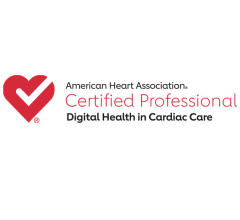
August 13, 2015 — Many organizations may be rallying employees and resources in order to make the switch from the ICD-9 to the ICD-10 coding for medical diagnoses and inpatient hospital procedures before the Oct.1, 2015, implementation date. Richard Milam, office productivity expert and president and CEO of EnableSoft, suggests five practices that will enable healthcare providers to implement the ICD-10 by the due date and ensure an expedient, smooth transition. He indicates that these are imperative when it comes to the overall success of meeting the deadline:
Employ robotic process automation that does the work for you
“You” is meant to imply the entire organization because that is how many resources it will take to have the ICD-10 switch completed by the deadline if robotic process automation is not used to update and add the multiple new codes into electronic medical record (EMR), National Drug Code (NDC), medical billing and claims processing data systems. Certain software may have to be upgraded or replaced to support the 68,000 diagnoses codes and nearly 87,000 procedure codes; however, through a series of human-directed scripts, robotic process automation technologies will populate the specific fields in the data systems with the ICD-10 data required. The already costly transition to the new ICD-10 can be mitigated by not having to outsource or hire new employees to enter the new codes manually. Furthermore, the data transition can take place over the course of a few days, not a few months.
Test your software
Not only should you confirm with your clearinghouses, billing service and payers that they will be upgraded and compliant with the ICD-10, but when they will be ready for testing to occur. Robust end-to-end testing must occur with your software in order to ensure claims are being accepted properly and processed by insurance contractors, Medicaid and Medicare and that other payment processes are operational. Test internally to ensure transactions can be generated and sent with the ICD-10 codes and test externally to ensure the transactions are successfully received by payment providers and that the payment can be processed correctly. After October 1, any ICD-9 codes used in transactions will not be accepted for services and will be rejected for payment. Failure to test your software properly can result in disruptions in patients’ receiving the treatment they need and receipt of due payments.
Educate or it all falls down
The updated, enhanced medical coding will not prove capable without humans to employ its codes, terminology, and procedures appropriately and correctly. You must educate your staff about the changes to the ICD-10 and perform practices and routines in order to prepare for the change. Have each of your staff participate in educational seminars in order to become informed of the changes and how that will affect their position, the procedures patients are to undergo based on the new diagnosis codes, as well as the improved treatments that patients are to have performed. Assist and inform staff by identifying the 50-100 most commonly used ICD-9-CM diagnosis codes based on specialties and determine the equivalent ICD-10-CM codes, and have this information accessible before and after the implementation of the ICD-10. Having your staff prepared and knowledgeable about the ICD-10 will reduce delays in patient care and procedures, which is the reason for the ICD-10—to deliver improved diagnosis and advanced medical treatments that will enhance patients’ quality of care.
Implement an effective communication method and coordinate conflict resolution
While making the data transition and update to the new and diverse medical coding that is in the ICD-10, it is inevitable that there may be delays in processes, confusion over coding and form completion, as well as workflow changes. Make sure your employees know who they can contact or call on if they are unsure of what code to report, how to complete a form or other transitory questions that may arise following the implementation of the ICD-10. Identify leads and supervisors for each workflow and specialty area that will be available for their staff requests and questions, and make sure those individuals are highly educated on the ICD-10 and have the authority to execute a resolution.
Additionally, determine how transactions handled just prior to the compliance date will be handled in order to ensure payment processing will occur and, more importantly, patients are covered financially and receive the best treatment. Identify critical areas or procedures that may be challenging to transition to using the ICD-10 and have practical resolutions for those practices ready to be executed if and when needed.
Obtain the correct medical documentation and update your forms to support the ICD-10.
Patient intake forms, EMR forms, insurance forms and superbills must be updated to support the ICD-10 codes. In order to have patient medical records completed correctly and treatments performed effectively — and to have payments process — healthcare providers, clearinghouses and payers must update their forms to reflect the codes in the ICD-10. Physician forms must be updated with the new medical terminology and diagnoses and procedural codes, along with superbills. Identify categories of uncommon services and diagnoses and determine units, time and cost for each category in order for physicians to be able to report in the EMR and on superbills. Determine and have readily available a list of common or most frequently used abbreviations to ensure they are utilized correctly and correspondently with the ICD-10 terminology and codes.
Lastly, obtain the updated and correct documentation that will stand as educational and reference material in regards to the ICD-10. The American Medical Association publishes the ICD-10 codebook and other supplementary documentation on topics such as anatomy and physiology, mappings and coding workbooks. Make sure to have these ICD-10 Bibles available, and in all areas, for staff and physicians to reference when needed or desired.
For more information: www.enablesoft.com


 November 14, 2025
November 14, 2025 









